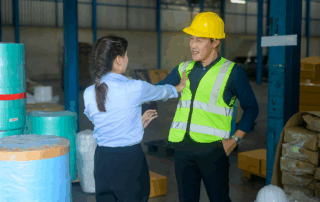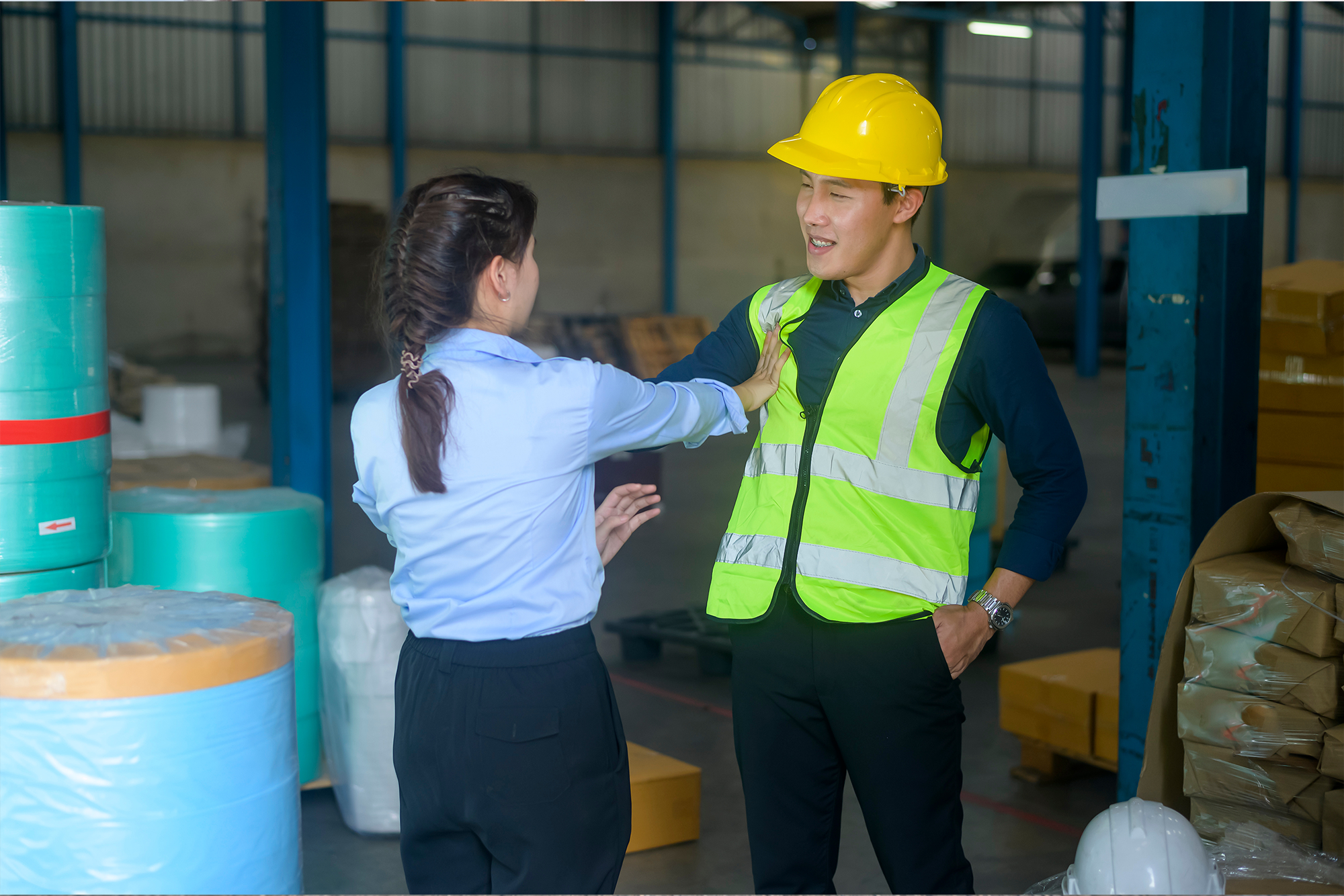Employers should reduce workplace heat stress by implementing engineering and work practice controls.
Engineering controls might include those that:
- Increase air velocity.
- Use reflective or heat-absorbing shielding or barriers.
- Provide shaded work areas
Work practice recommendations include the following:
- Limit time in the heat and/or increase recovery time spent in a cool environment.
- Reduce the metabolic demands of the job.
- Use special tools (i.e., tools intended to minimize manual strain).
- Increase the number of workers per task.
- Train supervisors and workers about heat stress.
- Implement a buddy system where workers observe each other for signs of heat intolerance.
- Require workers to conduct self-monitoring and create a work group (i.e., workers, a qualified healthcare provider, and a safety manager) to make decisions on self-monitoring options and standard operating procedures.
- Provide adequate amounts of cool, potable water near the work area and encourage workers to drink frequently.
- Implement a heat alert program whenever the weather service forecasts that a heat wave is likely to occur.
- Institute a heat acclimatization plan and increase physical fitness.
Training
Train workers before hot outdoor work begins. Tailor training to cover worksite-specific conditions.
Employers should provide a heat stress training program for all workers and supervisors about the following:
- Recognition of the signs and symptoms of heat-related illnesses and administration of first aid.
- Causes of heat-related illnesses and the procedures that will minimize the risk, such as drinking enough water and monitoring the color and amount of urine output.
- Proper care and use of heat-protective clothing and equipment and the added heat load caused by exertion, clothing, and personal protective equipment.
- Effects of non-occupational factors (drugs, alcohol, obesity, etc.) on tolerance to occupational heat stress.
- The importance of acclimatization.
- The importance of immediately reporting to the supervisor any symptoms or signs of heat-related illness in themselves or in coworkers.
- Procedures for responding to symptoms of possible heat-related illness and for contacting emergency medical services.
In addition, supervisors should be trained on the following:
- How to implement appropriate acclimatization.
- What procedures to follow when a worker has symptoms consistent with heat-related illness, including emergency response procedures.
- How to monitor weather reports.
- How to respond to hot weather advisories.
- How to monitor and encourage adequate fluid intake and rest breaks.
Acclimatization
Acclimatization is the result of beneficial physiological adaptations (e.g., increased sweating efficiency, etc.) that occur after gradual increased exposure to a hot environment. Employers should ensure that workers are acclimatized before they work in a hot environment.
- Gradually increase workers’ time in hot conditions over 7 to 14 days.
- For new workers:
- The schedule should be no more than 20% of the usual duration of work in the heat on day 1 and no more than 20% increase on each additional day.
- For workers with previous experience:
- The schedule should be no more than 50% of the usual duration of work in the heat on day 1, 60% on day 2, 80% on day 3, and 100% on day 4.
- Closely supervise new employees for the first 14 days or until they are fully acclimatized.
- Non-physically fit workers require more time to fully acclimatize.
- Acclimatization can be maintained for a few days of non-heat exposure.
- Taking breaks in air conditioning will not affect acclimatization.
Hydration
Employers should provide the means for appropriate hydration of workers.
- Water should be potable, <15°C (59°F), and made accessible near the work area.
- Estimate how much water will be needed and decide who will obtain and check on water supplies.
- Individual, not communal, drinking cups should be provided.
- Encourage workers to hydrate themselves.
Workers should drink an appropriate amount to stay hydrated.
- If in the heat <2 hours and involved in moderate work activities, drink 1 cup (8 oz.) of water every 15–20 minutes.
- During prolonged sweating lasting several hours, drink sports drinks containing balanced electrolytes.
- Avoid alcohol and drinks with high caffeine or sugar.
- Generally, fluid intake should not exceed 6 cups per hour.
Rest Breaks
Employers should ensure and encourage workers to take appropriate rest breaks to cool down and hydrate.
- Permit rest and water breaks when a worker feels heat discomfort.
- Modify work/rest periods to give the body a chance to get rid of excess heat.
- Assign new and unacclimatized workers lighter work and longer, more frequent rest periods.
- Shorten work periods and increase rest periods:
- As temperature, humidity, and sunshine increase.
- When there is no air movement.
- If protective clothing or equipment is worn.
- For heavier work.
Content source: National Institute for Occupational Safety and Health
About the Author
Share This Story
Related Blogs
Trump Administration Reshapes Health Plan Oversight
The Trump administration has issued a series of executive orders aimed at recalibrating federal oversight of employer-sponsored health plans. These directives target unpublished rules and agency enforcement priorities, signaling a shift toward deregulation and increased flexibility for plan sponsors.
Keeping Our Workplace Violence-Free
Although we do our best at to keep the workplace safe, violence inflicted by an outsider or between employees remains a serious safety and health issue. It can occur inside or outside the workplace and can range from threats and verbal abuse to physical assaults and homicide. In fact, according to the United States Department of Labor, workplace violence is the fourth-leading cause of fatal occupational injury in our country.
Understanding Educators Legal Liability (ELL)
Educators face unique professional exposures that go beyond standard general liability. That’s where Educators Legal Liability (ELL) coverage comes in. Understanding Educators Legal Liability is critical for school administrators, as it protects against claims related to employment practices, student rights, professional duties, and more. From wrongful termination to student disciplinary disputes, ELL can provide defense and indemnity for claims that other policies may exclude.








